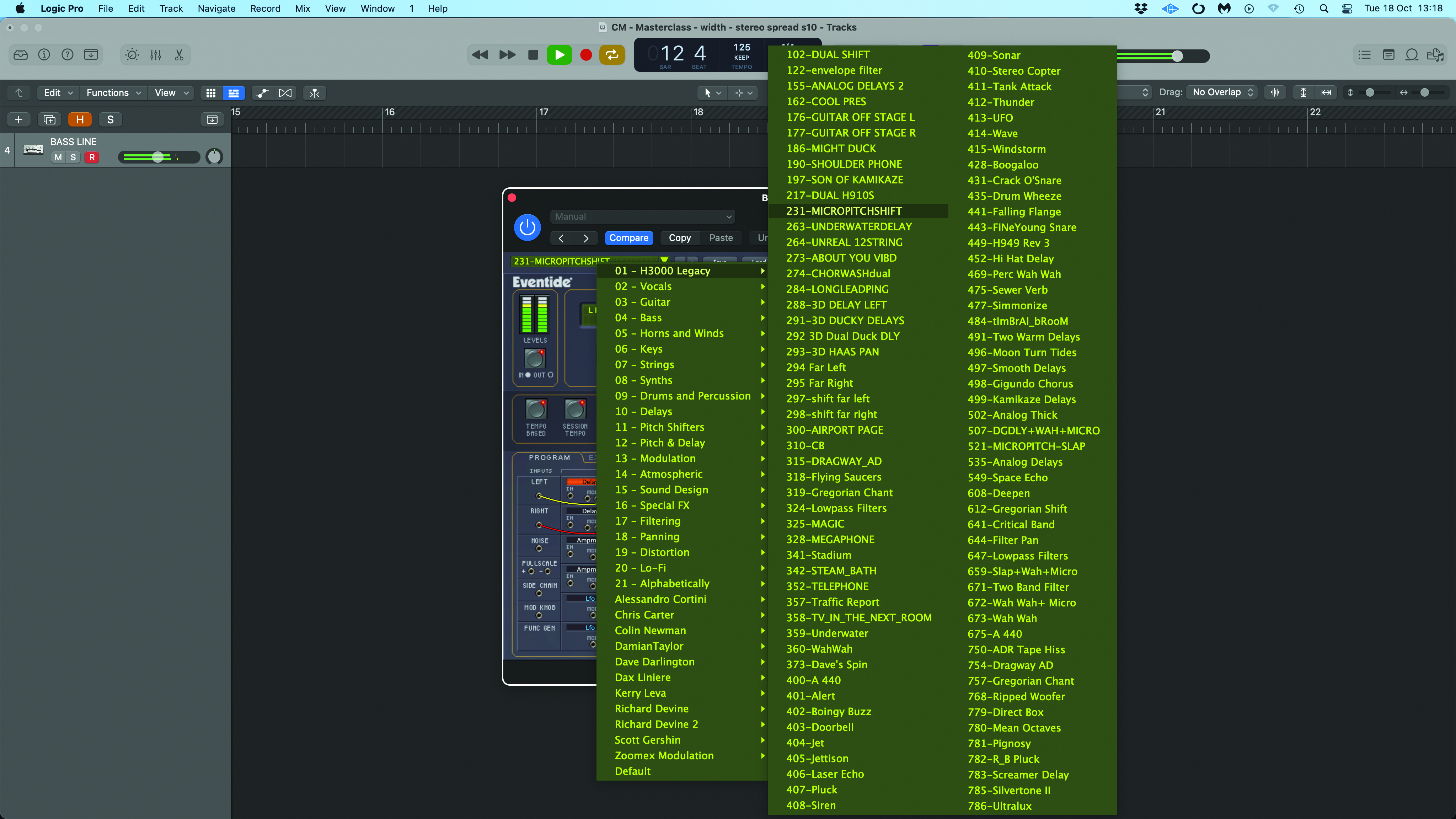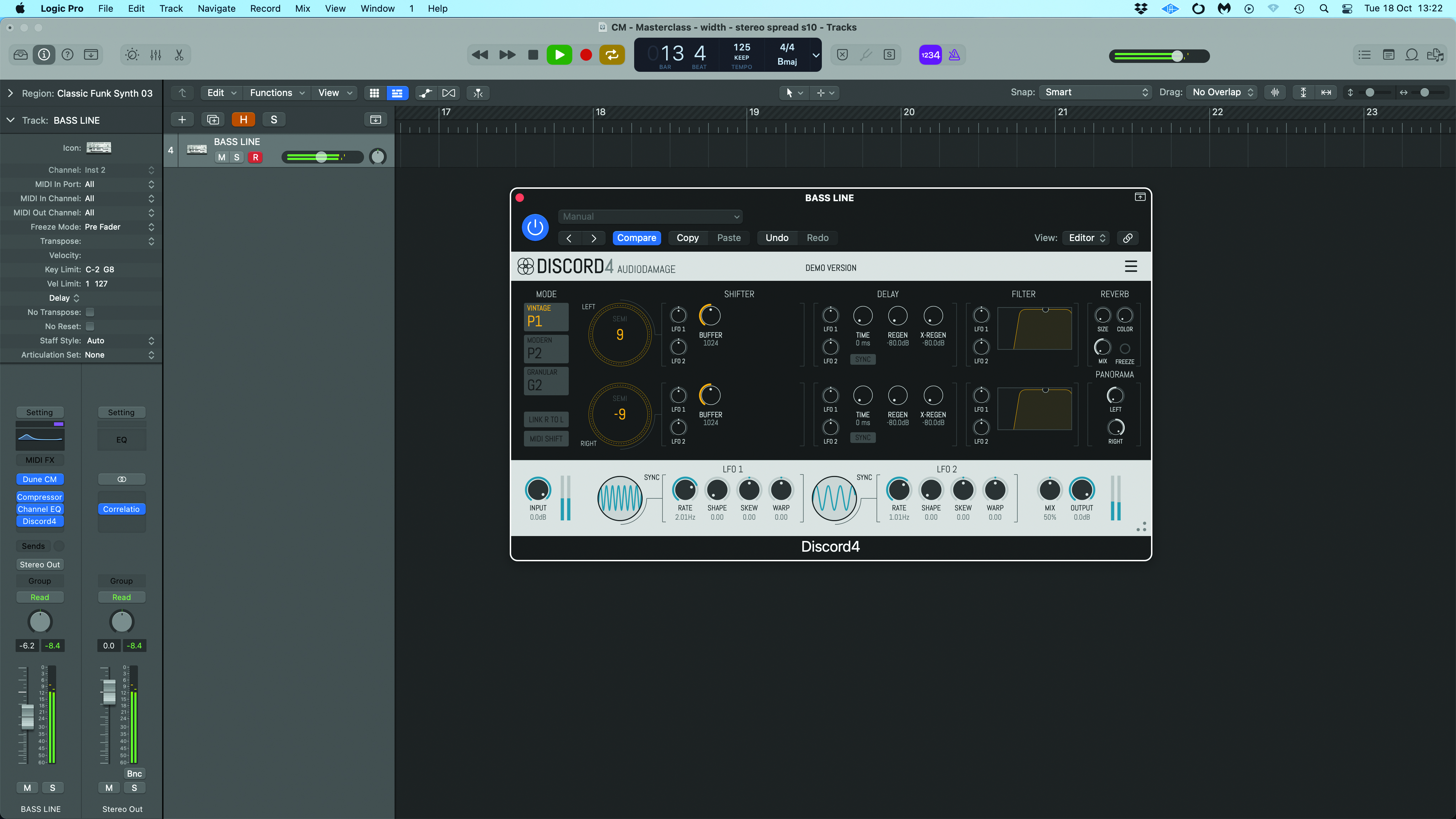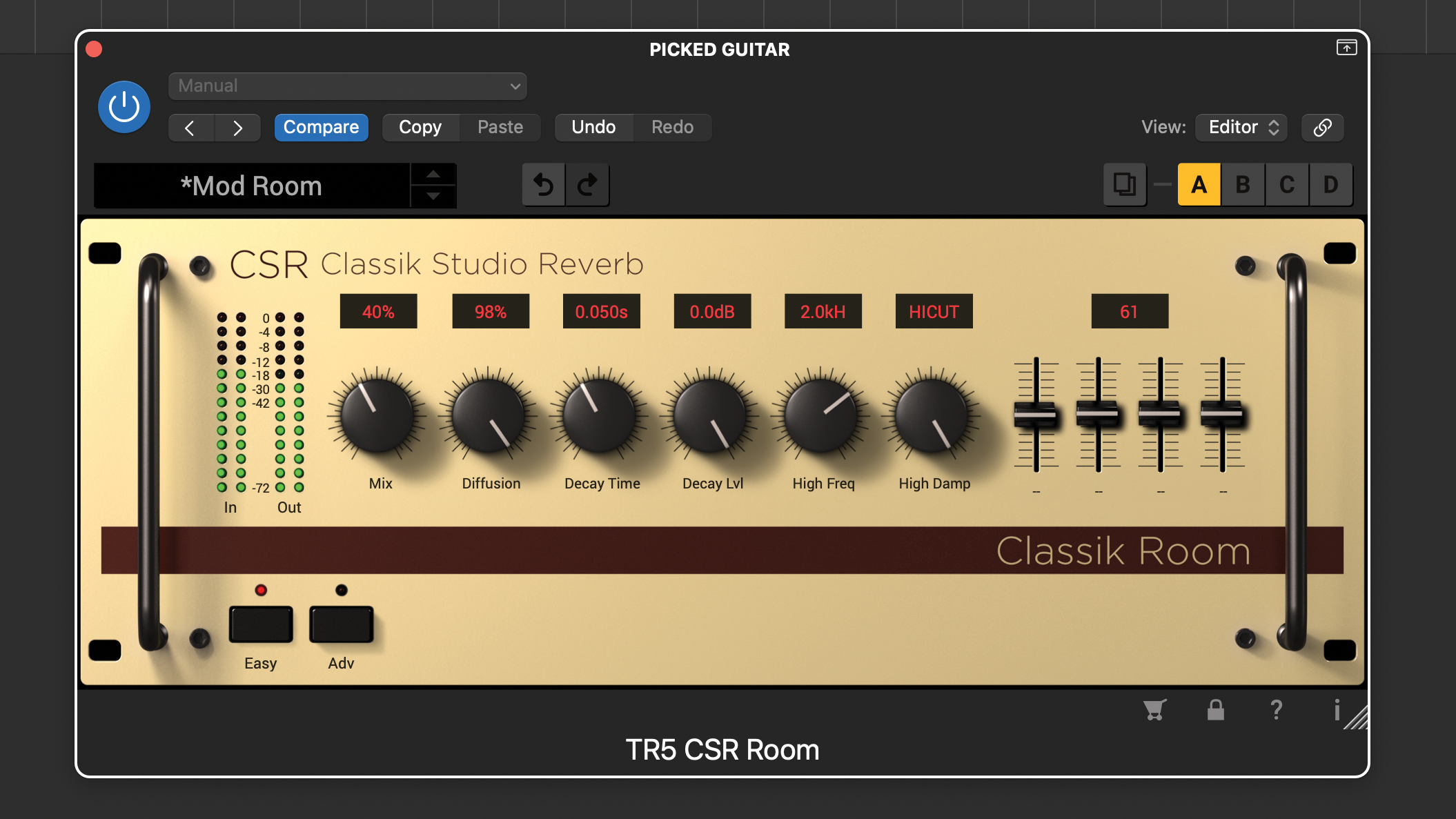How to add width to mono sounds
Are you battling a mix that includes too many mono sounds? Maybe they just need a bit of added width. Welcome to Jon Musgrave’s new Mix Masterclass…

Making full use of the stereo image can be an important aspect of a successful mix, and often we need to find a way to add width to mono sounds.
The groundwork for a wide, expansive mix is often laid at the production or recording stage. You might have double tracked elements to create really tight doubles that you can pan to opposite sides, or maybe you’ve recorded instruments in stereo complete with a great room ambience.
Either way, these components mean you’re already well on the way to stereo nirvana and can supplement these aspects with further reverbs and panning to create stereo width as required. But what if you don’t have these elements in the first place and are presented with a bunch of mono sounds?
An obvious solution is artificial reverb, but this adds a lot of colour. Here I’m going to look at a number of ways we can add width to mono sounds without that reverb colour. These techniques are pretty straightforward and use some form of delay, pitch shifting or pitch modulation. That said, they can also have downsides, particularly when you mono them, which we’ll also discuss.
Given how handy this sort of effect can be, it should come as no surprise that plugin developers have finessed the idea and bundled it in task-specific plugins geared towards this exact purpose, such as the JST & Boz Digital Sidewidener, which can be downloaded for free with any issue of Computer Music Magazine.

Step 1: If you want to add stereo width to a mono signal the simplest way is to split it into two, hard panning the two signals in opposite directions and then delay one side slightly. This works for delay times up to about 25ms (the Haas effect). Any longer and you begin to notice the delay.

Step 2: You can do this by duplicating the track and delaying one of the tracks. Or simply grab a utility delay plugin with millisecond delay capabilities. However, although this technique sounds great in stereo, when you mono it you will probably get comb filtering.
Want all the hottest music and gear news, reviews, deals, features and more, direct to your inbox? Sign up here.

Step 3: Whether the comb filtering in mono is a problem is, of course, subjective but also quite dependent on the type of sound and the exact delay timing. One option is to mono the signal and adjust the delay timing to get a sound that’s acceptable in mono.

Step 4: If we combine delay with pitch modulation then we can reduce the comb filtering created by our delay technique and this is what a chorus does. However, to make this work as a widening effect, we need to split the effected and direct signals, much like the classic stereo chorus effect, panning one to the left and one to the right.

Step 5: You’ll find that some plugins include this as an option. A plugin such as UAD’s Brigade Chorus, which is based on the famous Roland CE-1, includes the Classic mode for this purpose. Alternatively, grab a chorus with dual mono capabilities, setting the mix to 100% on one side and 0% on the other.

Step 6: With the two signals basically hard panned to opposite sides this produces a pretty wide effect and it can sometimes sound a bit too detached. If this is the case you can simply use a stereo width plugin to make things narrower, or if you’ve used two separate tracks, try reducing the panning.

Step 7: A bit like applying delay, we can create width by shifting pitch. Typically associated with Eventide’s H3000 MicroPitchShift effect, the key here is that the shift is very small (a few cents) and that it’s different on the left and right. It can also be combined with a short delay like in step 1.

Step 8: To match the classic effect, you’re looking for about +9 cents on one side and -9 cents on the other. Not all DAW stock plugins can deliver this sort of shifting in a convincing manner. Plugins such as Soundtoys Microshift and Eventide’s MicroPitch are purpose built for the job, but more general plugins such as Audio Damage Discord 4 are also perfectly good.

Step 9: A variation on this is to modulate the pitch on one side using an LFO. This is a simplified version of another H3000 classic (Voice Doubler). Using H3000 Factory, I’ve augmented the existing micro pitch shift, setting the LFO to 1Hz and the shift limit to about 10 cents. Other good plugins for this include Audio Damage Discord 4 and Waves Doubler.

Step 10: Mono to stereo plugins vary in their complexity and effectiveness but usually attempt to retain good mono compatibility. Couple this with their turnkey simplicity and they present a highly attractive proposition when you’re after a quick reliable way to add width to mono sounds.

Step 11: Sidewidener is a free plugin from the Computer Music Plugin Suite with three width modes that provide progressively more decorrelation and thus wider effects. Simply adjust the Width control to taste and use the Tone parameter to focus on the desired frequencies. It’s simple to use, doesn’t degrade your mono signal and is, of course, free.

Step 12: If you have some budget, Nugen’s Stereoizer 3 is one of the best wideners around, handling both mono and stereo sources. For mono sources you have two algorithms based on timing and intensity, and both include frequency limits and focusing. It’s highly flexible, sounds excellent and has great mono compatibility.
Barely there reverb
As mentioned, reverb is a great way to add width but it also adds colour, and the techniques here are designed to minimise added colour. However, there is a way to use reverb without adding too much colour, and this can be great for creating subtle width. What you need is a very short reverb.
Nevertheless, the success of this technique really rests on finding the right sort of reverb and the short reverb capabilities of plugins seem to vary quite a bit. What you’re after is an effect that lets you reduce the size and decay time right down and also has a nice decorrelated effect, so it adds width. To check this, load the reverb as an insert and set the mix to 100% wet.

Here I’ve loaded up one of my favourites (IK Multimedia’s CSR Room) which allows you to adjust the width of the reverb signal, so you can exaggerate this effect even more. With a few key tweaks (decay time 0.05s, room size 4.0m and high cut 2kHz) I’ve created a lovely wide effect which I simply need to blend to taste, which is about 40% for this guitar track.
Recommended listening
Ed Sheeran - 2Step
Check out the first 30 seconds of this track to hear typical mono to stereo processing in a contemporary mix.
2. Britney Spears - Toxic
A great track to reference on many levels, but focus on the acoustic guitar for a perfect example of mono to stereo.
Jon is a London based platinum award winning mixer, producer, composer and club remixer with a diverse CV that spans dance, pop, rock and music for media. He’s also a long term contributor to MusicRadar's music technology tutorials and reviews. Whether working alone or collaborating he usually handles final mixdowns, so you’ll also find MusicRadar peppered with his handy mixing tips.
